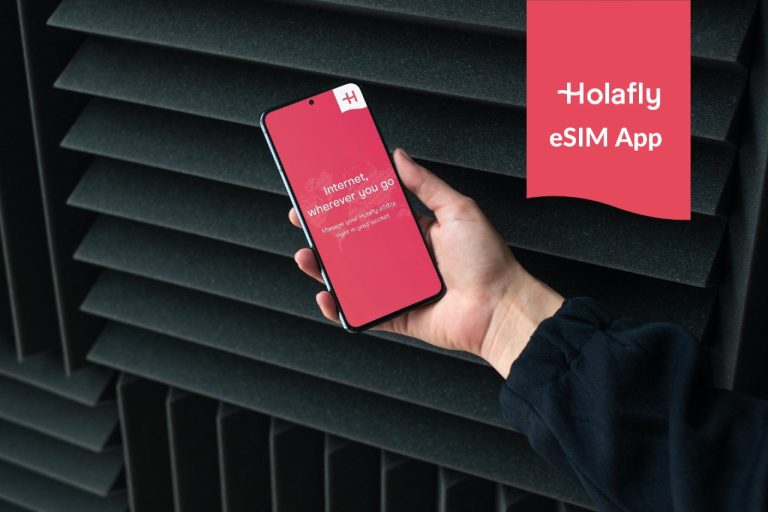Beyond borders: Summer 2025 travel and eSIM report
Summer 2025 travel report: 19% of travelers chose eSIMs, 95% will use them again. Discover connectivity trends, top destinations, and sustainability insights.
Summer 2025 marked a turning point for travel connectivity. Nearly three-quarters of people took summer travel trips between June and August, with 37.6% crossing borders for international travel. But the bigger shift happened in how they stayed connected: only 0.8% went completely offline.
For the first time, eSIMs moved beyond early adopters into the mainstream. One in five travelers chose digital connectivity this summer, and 95% of first-time users said they’d use an eSIM again, a travel trend that’s reshaping how we stay online abroad.
At Holafly, we surveyed nearly 1,000 travelers across four continents to understand how people really stay connected while traveling. Here’s what we found.

1. The eSIM tipping point: 1 in 5 Travelers go digital
This summer, eSIMs went from niche tech to mainstream choice. Globally, 19% of travelers used an eSIM to stay connected, beating WiFi-only users (17.5%) and leaving pocket WiFi devices (3.3%) in the dust.
But the real story isn’t adoption. It’s retention.
Among first-time eSIM users, who made up 18% of all eSIM travelers this summer, an overwhelming 95% said they’d use one again. That kind of immediate conversion is rare in travel tech, and it shows how much eSIMs change the experience once people try them.
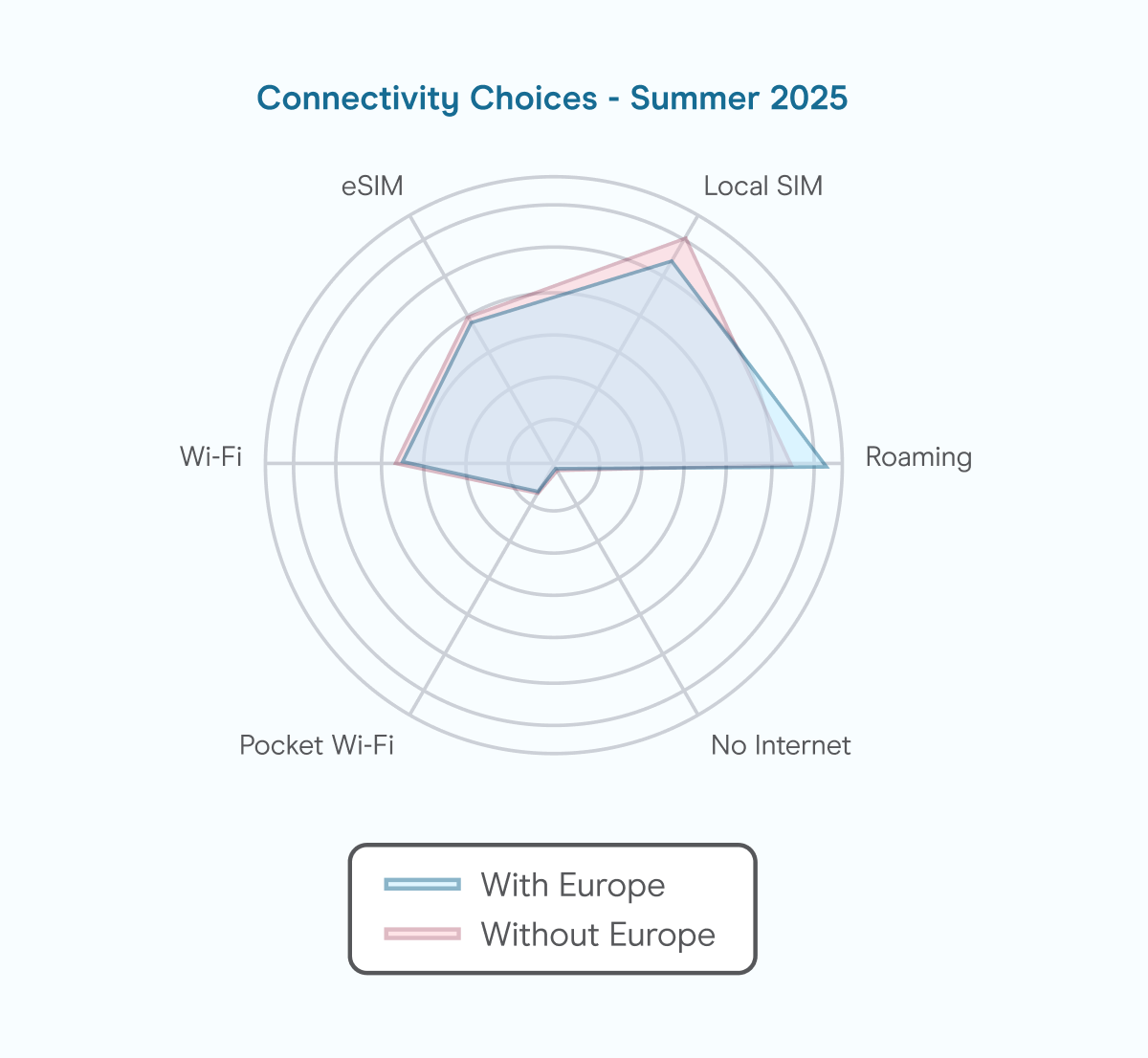
Multi-country travelers lead the way
The more complex the itinerary, the more sense eSIMs make. Among travelers who visited multiple countries (43% of all international travelers this summer), eSIM adoption jumped to 26%, well above the global average.
When you’re hopping between Spain, France, and Italy, or exploring Japan and South Korea back-to-back, staying connected without swapping physical SIM cards at every border saves time and hassle.
What made eSIMs so appealing? Travelers pointed to three main reasons:
- Easy activation (29%): Most were online within minutes by scanning a QR code.
- Cost savings (26%): Clear pricing without hidden roaming fees.
- Freedom from public WiFi (25%): No more hunting for café connections or trusting hotel networks.
Another 20% specifically valued avoiding roaming charges, showing how pricing transparency matters as much as the total cost.
Regional adoption: Where eSIMs are winning
Not all regions adopted eSIMs at the same pace. Here’s how summer travel connectivity broke down globally:
| Region | eSIM adoption | Top alternative | Context |
|---|---|---|---|
| Oceania | 31% | Local SIM (37%) | Highest global eSIM adoption |
| North America | 20% | Roaming (35%) | Strong digital infrastructure |
| Europe | 16% | Roaming (54%) | EU “Roam Like at Home” keeps roaming dominant |
| Latin America | ~10% | WiFi (44%) | Price sensitivity drives WiFi reliance |
| Africa | 13% | Local SIM (33%) | Growing but connectivity challenges remain |
The Latin America region showed the slowest adoption at around 10%, reflecting ongoing price sensitivity, where nearly half of travelers relied on WiFi to stay connected abroad.
The experience that converts
Beyond the numbers, what stands out is the experience itself. Travelers praised the instant setup, the ability to switch networks mid-trip, and pricing they could understand upfront. For multi-destination trips especially, eSIMs delivered what physical SIMs and roaming packages couldn’t: flexibility without friction. The verdict from summer 2025 travel trends: eSIMs aren’t the future of travel connectivity. They’re here now.
The European paradox: More than half of Europeans (54%) still use roaming thanks to the EU’s “Roam Like at Home” policy, which makes roaming seamless and affordable within member states. Remove Europe from global data, and eSIM adoption patterns shift dramatically.

2. Greener connections: When convenience meets conscience
Sustainability isn’t yet driving eSIM adoption, but the conversation has started. Among summer travel eSIM users, 36.3% thought about environmental impact when choosing how to stay connected. That’s more than one in three travelers who at least thought about the footprint of staying connected abroad.
Here’s the breakdown:
- 16.3% said sustainability was important in choosing how to stay online while traveling
- 20% thought about it along with other factors like cost and convenience
- 22.2% didn’t know that different options have different environmental footprints
- 41.5% said it didn’t influence them. Cost and convenience still dominated
That 22.2% awareness gap is significant. Many travelers simply don’t know their connectivity choice affects the environment.
Youth leading the shift
The sustainability conversation is generational. Nearly two-thirds of eSIM users who care about environmental impact are under 45. This younger group grew up with climate awareness and digital-first habits, making them more likely to connect the two when planning summer travel.
As this group becomes the dominant force in travel trends, sustainability will shift from nice-to-have to expected.
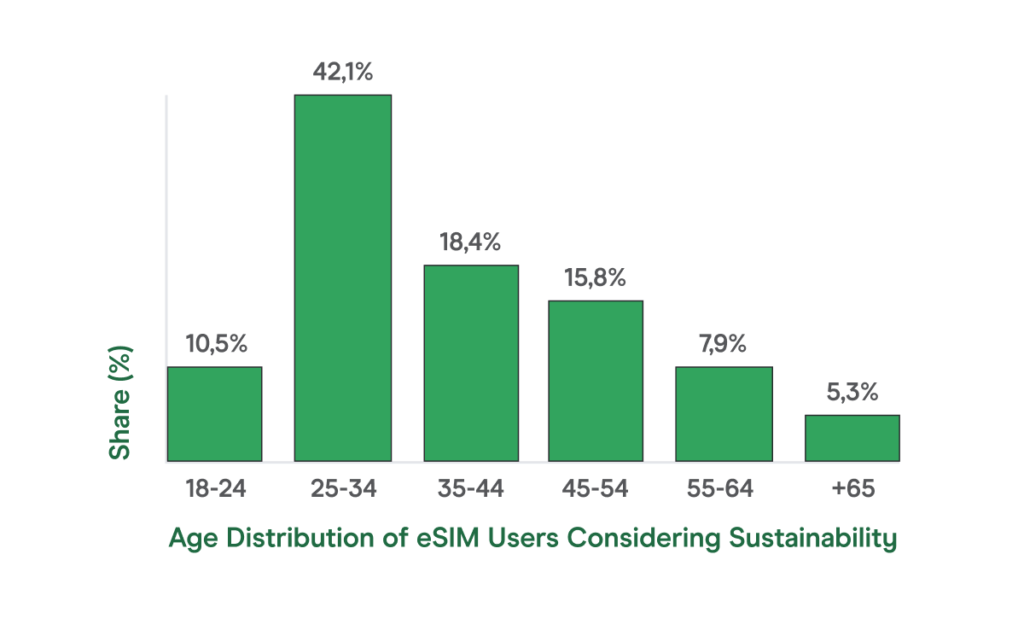
The eSIM environmental advantage
So what’s the actual impact? Research shows eSIMs can cut emissions by up to 87% versus physical SIM cards. They eliminate plastic production and shipping. No card, no packaging, no global logistics chain.
Holafly’s cumulative impact:
- 13.6 million eSIMs sold to date
- ~1,563 tons of CO₂ emissions avoided
- Equal to removing 340 cars from the road for a year
These aren’t abstract stats. They show real cuts in plastic waste and carbon from international travel connectivity.
Domestic vs. international travel patterns
Domestic travelers were more likely to weigh sustainability in their connectivity choices than international travelers:
- 45.7% of domestic travelers thought about the environmental impact
- 33.3% of international travelers factored it in
Why the gap? Long-haul international travel pushes reliability and practicality to the front. When you’re far from home, staying connected matters more than the environmental footprint of how you connect.

The opportunity is clear: as the greener option becomes the easier and more affordable option, adoption will accelerate naturally. You no longer have to choose between convenience and conscience.
3. Where the world went: Summer 2025’s travel map
Summer 2025 showed just how global travel has become. When we asked travelers where they went, 582 unique destinations across nearly 40 countries came up. That’s proof international travel is remarkably diverse and accessible now.
Top destinations that defined summer
Spain’s spot as the top summer travel destination confirms that Mediterranean culture and sunny lifestyle still draw crowds. But South Africa’s strong second-place finish is the bigger story, showing Africa coming up as a serious contender in international travel trends.
Countries that dominated summer travel:
| Rank | Country | Notable cities | What drew travelers |
|---|---|---|---|
| 1 | Spain | Barcelona, Madrid, Málaga, Seville | Mediterranean energy, culture, coastal escapes |
| 2 | South Africa | Cape Town, Durban | Dramatic coastal scenery, cultural depth |
| 3 | Japan | Tokyo, Kyoto, Osaka | Blend of tradition and innovation |
| 4 | Canada | Toronto, Vancouver, Victoria | Multicultural cities, natural beauty |
| 5 | United States | Las Vegas, New York, Florida, California | Entertainment capitals, diverse landscapes |
The city rankings told a slightly different story. Cape Town and Durban both beat traditional favorites, cementing South Africa’s spot as a coastal adventure destination. Toronto showed Canada’s multicultural appeal, while Las Vegas proved entertainment capitals still pull crowds. Busan rounded out the top five, showing South Korea’s growing influence in global travel.
Asia’s breakthrough moment
Asia came out as the rising star of summer 2025, with Japan and South Korea leading. Singapore, China, and Thailand weren’t far behind. The continent spans technology hubs, ancient temples, food scenes, and natural wonders. Complete experiences that mix old with new.
The multi-destination trend
Perhaps the biggest shift: 43% of travelers visited multiple places during their summer trips. The single-destination holiday is giving way to “mini-expedition” itineraries where travelers string together multiple cities or countries.
Modern summer travel is about getting more from each trip, and that means:
- Shorter stays per destination but more destinations overall
- Regional combinations like multi-city European tours or Southeast Asian circuits
- Connectivity that travels with you. No SIM card hunting at each border

This trend directly drives eSIM adoption. Among multi-country travelers, eSIM usage jumped to 26%, significantly higher than the 19% global average. When your itinerary hops from Barcelona to Paris to Rome, or connects Tokyo, Seoul, and Bangkok, seamless connectivity across borders becomes essential.
Regional travel patterns
Not everyone traveled the same way. Regional patterns revealed distinct behaviors:
Latin America: Staying close to home
- 70% traveled domestically this summer
- Economic volatility and currency pressures made domestic travel the safer pick
- Mexico and Chile made up 95.8% of domestic-only trips in the region
North America: International appetite
- 88% went abroad, showing strong appetite for international travel
- Long-haul trips to Australia and South Africa were common
- Canadians slightly more international (38.7% traveled abroad) vs. Americans (28.2%)
Europe: Balanced and borderless
- 57% traveled internationally, 43% stayed domestic
- Short borders and low-cost flights enable both
- UK travelers were most international (64.6% of all European international trips)
Africa: Globally connected
- Nearly 90% of African travelers who took summer trips went abroad
- Top destinations: South Africa, India, Canada
- Shows diaspora connections and emerging market ties
These patterns show how destination complexity and border crossings directly shape connectivity needs. The more borders you cross, the more you value smooth, flexible ways to stay connected abroad.
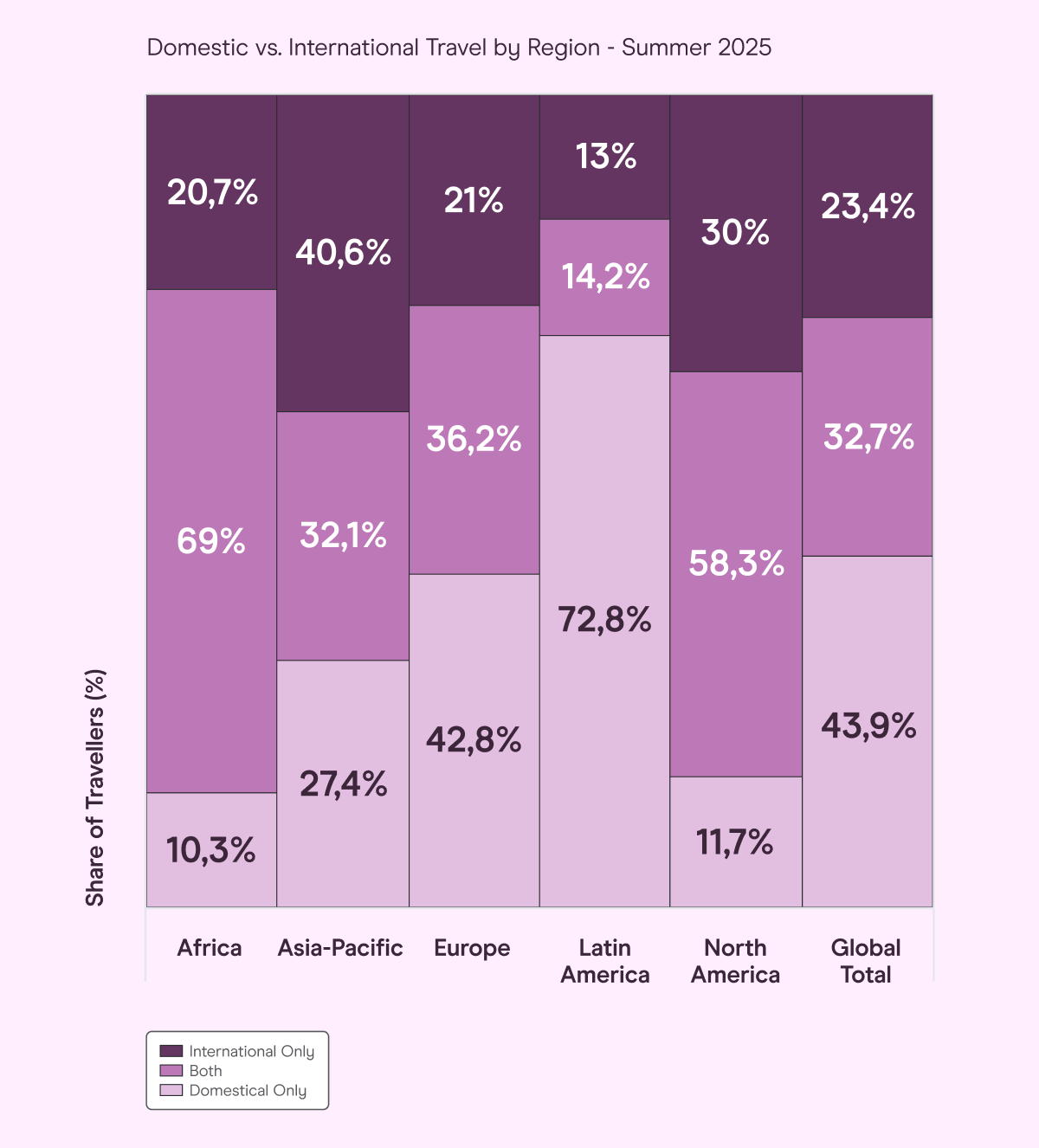
4. The full connectivity picture: How summer travelers stayed online
Staying completely offline is no longer an option. This summer, only 0.8% of travelers went without internet access. Everyone else found a way to get connected, but their choices varied widely based on cost, convenience, and their destination.
Here’s how travelers stayed connected abroad this summer:
- 31% used roaming – keeping their home carrier active
- 27% bought local SIM cards – the budget-conscious option
- 19% chose eSIMs – the digital-first solution
- 17.5% relied on WiFi only – hotels, cafés, and public hotspots
- 3.3% used pocket WiFi – mostly families and groups
Remove Europe from the equation, and the picture changes: local SIMs jump to #1 at 30%, while roaming drops to #2 at 27%. This shows that outside Europe’s regulatory setup, travelers actively look for alternatives to expensive roaming.
Regional connectivity patterns
Different regions built different connectivity habits based on infrastructure, economics, and travel culture:
| Region | Top choice | 2nd choice | 3rd choice | Key insight |
|---|---|---|---|---|
| Europe | Roaming (54%) | WiFi (16%) | eSIM (16%) | EU regulations make roaming seamless |
| Latin America | WiFi (44%) | Local SIM (22%) | Roaming (22%) | Cost pressures dominate decisions |
| North America | Roaming (35%) | Local SIM (24%) | eSIM (20%) | Convenience culture |
| Africa | Local SIM (33%) | WiFi (22%) | Pocket WiFi (20%) | Highest pocket WiFi use globally |
| Oceania | Local SIM (37%) | eSIM (31%) | WiFi (19%) | Leading eSIM adoption |
Latin America’s WiFi dependence: With 44% relying mainly on WiFi, the region’s connectivity choices show economic realities. Travelers hunt for connections rather than pay for seamless access. It’s a reminder that cost matters in emerging markets.
Africa’s pocket WiFi preference: At 20%, Africa showed the highest pocket WiFi usage globally, often shared among families or groups to split costs. It’s a practical solution where connectivity infrastructure remains challenging.
Oceania’s digital leadership: With 31% eSIM adoption, Australia and New Zealand lead the world in taking up digital-first connectivity for international travel.
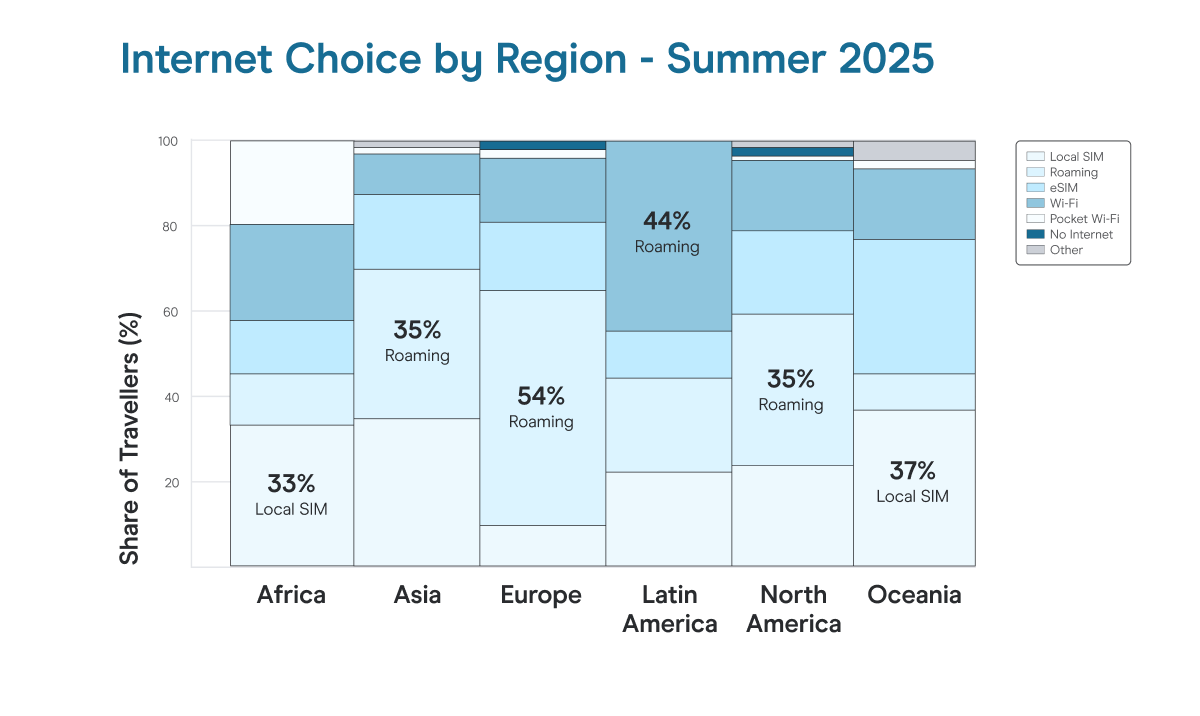
5. Business travel evolution
Professional travel bounced back this summer, with 19.6% of all trips including a business purpose. But how these travelers stayed connected shows a split between going solo and company support:
- 50.3% self-managed: Bought their own local SIMs, roaming plans, or eSIMs
- 32.7% used company SIMs: Traditional corporate solution
- 15.6% used company eSIMs: The growing digital option
- 1.4% used company WiFi: A fading approach
The business travel crowd skews younger: 65% of professional travelers were between 25 and 44 years old, showing how millennials and Gen Z are redefining bleisure. Work obligations blend with leisure exploration.
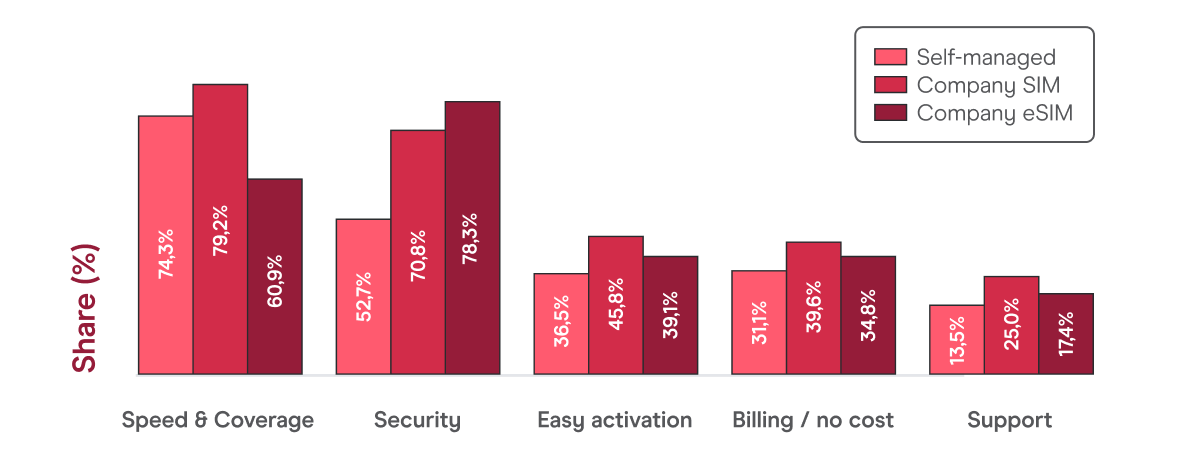
When connectivity impacts productivity
For business travelers, internet access is so much more than a convenience. Our research found a direct connection between connectivity quality and work outcomes:
- 57% reported a productivity boost thanks to strong internet connections
- 13% said poor access hurt their work and increased stress levels
- 30% experienced it as neutral – adequate but not empowering
The 13% who suffered from poor connectivity experienced more than just slow downloads. They described increased stress, missed deadlines, and the mental burden of constantly seeking reliable connections. Data access has become a well-being issue, not just an IT checkbox.
What business travelers value most
When corporate travelers pick or judge their connectivity solutions, priorities shift based on who’s providing the service:
- Speed and coverage (74%) – If the network lags, nothing else matters
- Security (62%) – Keeping company data safe
- Easy activation (41%) – Time is tight when traveling for work
- Transparent billing / no personal cost (35%) – Clarity and fairness
- Responsive support (18%) – Help when things go wrong
The expectation gap: When companies provide connectivity solutions, expectations jump. Security becomes even more important (78% for company eSIM users vs. 53% for self-managed), and support expectations double from 14% to 25%. Once the employer takes responsibility, travelers expect both the tool and the backup.

Insight: Travel connectivity has become a stand-in for how companies care for their employees. Giving secure, smooth, and transparent digital access shows investment in both productivity and well-being.
Conclusion: The Holafly difference
Summer 2025 marked the moment travel connectivity went fully digital. One in five travelers has chosen eSIMs, and 95% of first-time users are already converts.
At Holafly, we’re positioned at the intersection of these summer travel trends. Our eSIMs deliver on what matters most:
- Easy, instant activation – Scan a QR code and you’re connected in minutes
- Coverage in 200+ destinations – Perfect for multi-country summer travel or single-destination escapes
- Unlimited data plans – Travel without watching the meter
- No registration required – Skip the forms and get straight to exploring
- Transparent pricing – Know exactly what you’re paying upfront
Whether you’re visiting one country or hopping across continents, our regional and single-country eSIMs have you covered.
For frequent travelers: Holafly Plans offers postpaid eSIM coverage across 170+ countries with three monthly plan options—perfect for regular business or leisure travel.
Bring your plans, not your worries. Holafly keeps you connected so you can enjoy the journey.





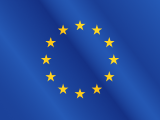



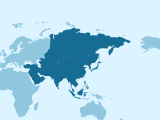




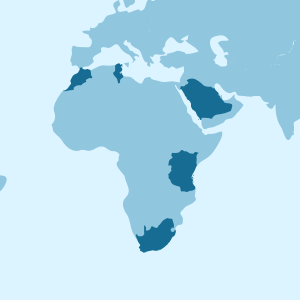



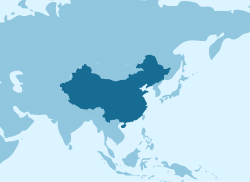




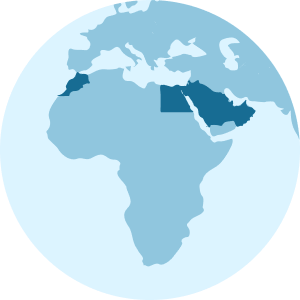





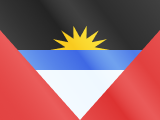








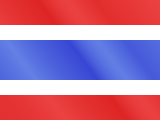







 Pay
Pay  Language
Language  Currency
Currency 


















 No results found
No results found





